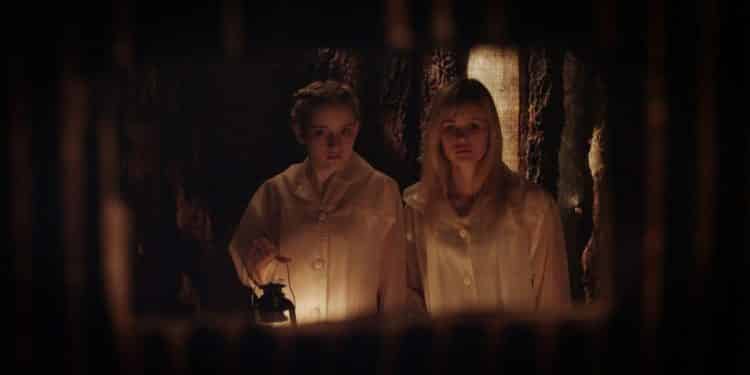Awards season is upon us, dear readers. All of the hard work Hollywood did, creating beautiful movies, hiring talented people, and kissing many a butt of an Academy Award voting member, will come to a culmination on February 26th. When the evening is through, naked golden men will be in the hands of some deserving people, and you know what? Good for them. However, this discussion is not for those shiny, chosen few. We present to you a bold claim – like foreign language films back in 1947 or animated films more recently in 2001, horror movies deserve to have their own Oscar category created.
Now I’m going to preface this list by countering an argument that I know is already going to come up. Why horror, and not other genres like sci-fi or fantasy? Allow me to name drop:
- A Clockwork Orange (1971), Star Wars (1977), E.T.: The Extra-Terrestrial (1982), District 9 (2009), Avatar (2009), Inception (2010), Gravity (2013), Her (2013), The Martian (2015), Mad Max: Fury Road (2015), and Arrival (2016).
- A Midsummer Night’s Dream (1935), Lost Horizon (1937), The Wizard of Oz (1939), Here Comes Mr. Jordan (1941), Heaven Can Wait (1943), It’s a Wonderful Life (1946), A Clockwork Orange (1971), Heaven Can Wait (1978), The Green Mile (1999), The Lord of the Rings: The Fellowship of the Ring (2001), The Lord of the Rings: The Two Towers (2002), The Curious Case of Benjamin Button (2008), and Hugo (2011).
What’s all that? Oh, that’s just the list of sci-fi and fantasy movies that do get nominated pretty regularly for Best Picture. Let’s not forget that Return of the King actually won the whole darn thing in 2003. What does horror have? One nomination in 1973 for The Exorcist and one win in 1991 for The Silence of the Lambs. And that one can be argued as more of a crime thriller than a horror film. For a genre that produced 259 films last year alone, that’s a lot of passing by.

So, here we go – award recognition for the spookiest of genres. Settle back folks, and let yourself get opinionated.
4. Horror Is One Of The Oldest Genres of Film

The invention of the first patented film camera was back in the mid 1890’s. The first captured images on these cameras were mostly slapstick or documentation pieces showing off the technology, but also on the scene was the first horror film (and, one of the first films, ever) The Haunted Castle (1896).

From there, horror has been with us. German filmmakers brought us The Cabinet of Dr. Caligari (1919) and Nosferatu (1922), movies that are still showing in theaters today, and honestly, are still pretty freaky.

Universal Studios, bless their twisted souls, brought horror to American soil with Dracula (1931), Frankenstein (1931), and Werewolf in London (1935). These did well, but not until 1942 with Cat People did the true power of horror as an industry emerge. You can make a cheap ass movie that scares the crap out of people, and people love having the crap scared out of them, therefore, bringing in the big ole movie bucks.
From here, you can follow the timeline – all a bloody road to modern day movie theaters. Horror trends are a mirror to the terror of the times. The 1940’s brought the fear of the outsider into the screens as WWII took place. The 50’s was won by the over the top monster flick for a society that was afraid of being tired of people. The sexual revolution of the 60’s brought sex and stronger female characters into the mix, which continued into the 70’s, when slasher flicks and the final girl trope entered into the foundation of horror films. The excess of the 80’s found its way into the over the top gore and special effects of zombie and body horror movies. The comedown from this was expressed with the dark turn 90’s horror took, with serial killers and horrible, complicated deaths. After 9/11, the 00’s went post-apocalyptic and tortuous.
Now, we’re seeing the rise of horror films that are talking about the darkness in society – The Purge movies, The Monster (2016), and the upcoming Get Out (2017).
Horror is a genre that has never left us, and yet, despite its storied past, award season leaves it all behind in favor of grandiose historical pieces where people cry, feel bad and look beautiful.

You can read more about the history of horror on this truly educational article from Filmmaker IQ , but we’re gonna right along to the next reason.
3. Horrors Subgenres Allow For Wide Audience Appeal And, Therefore, Good Award Fodder
Any horror nerd knows that the word “horror” is a truly a general term for an enormous range of films. Horror comes off with a bad name because those who aren’t into the genre think it’s all about the blood and gore, and nothing else. Now, don’t get me wrong – there are lots of blood and gore films, and they are very awesome.

However, horror is an all encompassing term for a film that makes you feel dread; and dread can come from any amount of sources. Finding new and creative ways to pull out that feeling from audiences is one of the hallmarks of horror, and one of the reasons why it is so continuously interesting for fans. Sure, for those of us who just want to see a masked weirdo murdering a whole bunch of people, only to be thwarted by one smart upstart, the slasher subgenre is a happy place to exist, but you don’t have to look hard for some depth.
Psychological horror is a great example of a subgenre that could pull its weight in the Oscars. Instead of jump scares or random removal of vital body parts, psychological horror gets into your head and attacks the fear and guilt that lies within your own mind. Done well, this subgenre can stay with you for a while after, and not in a “keep all the lights on in the house” kind of way. Rosemary’s Baby (1968), The Shining (1980), and A Tale of Two Sisters (2003) are all films that don’t try to scare you with monsters and make-up; they want inside your soul, and that’s an impact you don’t get from a lot of other film genres.

Another subgenre that currently scares away mainstream award recognition is body horror. Body horror tropes are things that are normally catnip to Oscar voters: slow, visceral, and filled with long shots of people crying in bathtubs. The only difference is that the Oscar winners tend to have those people in the tub with a glass of wine over the dissolution of a marriage, and, with body horror you would replace that glass of wine with teeth that have been recently pulled out, and the dissolution of marriage with the melting of one’s fingers.
Grossness aside, there is still a lot of artistic merit that can be found in these films. The good ones don’t scare you just because you watched someone rot away. They scare you because they make you question what it really is to be human. Just watch Under the Skin (2013), Starry Eyes (2014), or Akira (1988) and you’ll see what I’m talking about.

2. Horror Movies Make So Much Money, and The Oscars Are All About Money
You know what the most profitable movie of all time is? I’m not saying the one that brought in the most money, period. I’m talking about the film that, based on costs and return on investment, made the dollar bills rain down upon the luck filmmakers part of the team?
Paranormal Activity (2007). This movie only cost $450,000 and brought in $89,318,792. That’s an ROI of 19,749%. That’s amazing.

Number 2? The Gallows (2015). Cost $100,000 to make and made $6,870,661.
In fact, out of the top ten most profitable films based on cost, half of them are horror. Granted, not great films; The Devil Inside (2012) might have brought in a ton of money, but dammit that was a horrible movie.

Now, here’s the killer (ha ha, horror joke) data point. When a movie is nominated for an Oscar, ticket sales see, on average, a 22% bump, and DVD sales do just as well. Combine that with the already proven profitability of horror movies, and what do you have?
Dolla’ dolla’ bills, ya’ll.
Artistic integrity aside, bringing horror into the Oscar fold just makes good business sense.
1. There Are Some Really Freaking Good Horror Movies That Deserve The Award
All of the previous points aside, this list would not have a leg to stand on if there weren’t good, solid movies that deserve recognition. Well, baby, do I have some legs for you.

The Babadook (2014) – Probably the easiest sell of horror movies that could win an Oscar, director Jennifer Kent’s tale of a single mother struggling to raise her autistic child, all while some scary shit is going down, is pretty much the perfect movie. Pacing, acting, music, costuming, and plot all work together to create something that is simultaneously horrifying and terrifying.

Starry Eyes (2014) – There is nothing more that Hollywood loves quite like a movie about itself. The history of Oscars past are studded with movies about actors and the screen, and that is essentially the plot of Starry Eyes as well. An actress shows the lengths she is willing to go in order to be a star, and what unfolds is a dark metaphor to what we give up for our dreams.

We Are What We Are (2013) – A quiet, slow moving family drama, We Are What We Are is so unnerving that it stayed with me for weeks after watching it. This is also a fairly accessible horror film that I believe the Oscar voters could handle without being turned off by gory affairs – not saying that this film pulls any punches, but the wind-up leading up to that hit is masterfully done, and award worthy.

Don’t Breathe (2016) – The most recent example I’ll pull up, Don’t Breathe, is not only one of the best home invasion horror movies I’ve ever seen, but probably my favorite movie of last year. It has truly innovative shots, some that I don’t think I’ve ever seen before, excellent music choices, and a plot that kept on surprising me until the final shot. Not as in depth or impactful as The Babadook or We Are What We Are, but still a solid movie.
I could pull more movies out as examples, but the fact remains that horror as a genre, despite the huge fan base it possesses and the millions of dollars it brings into the industry, is widely, and regrettably, ignored during awards season. Horror films deserve to be pulled out of the shadows and put out in a place where the art, and not just the terror, can be appreciated.



